Biophilic Design in Toronto Metropolitan University’s Educational Spaces
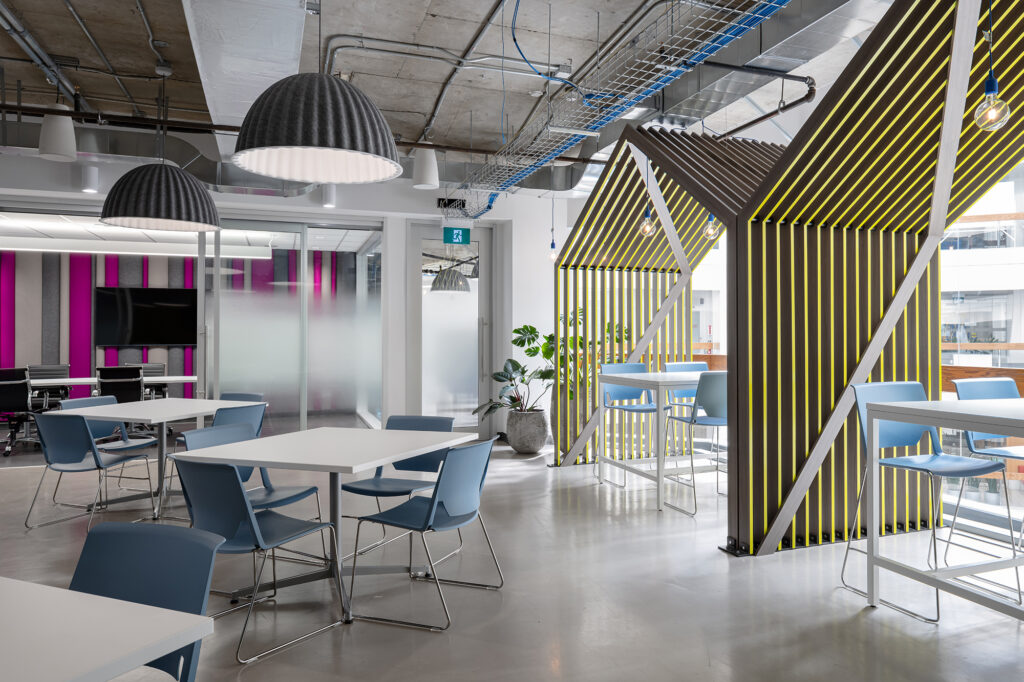
In the heart of Toronto’s bustling Atrium, the Toronto Metropolitan University (TMU) has reimagined its Faculty of Science (Computer Science) and Faculty of Arts (Psychology) spaces, drawing inspiration from the iconic location. The design here beautifully marries the concept of the atrium with the incredible natural light streaming into the area. As advocates of wellness architecture, we understand that in our modern lives, dominated by indoor spaces and technology, infusing biophilia into our work environments is more important than ever before.
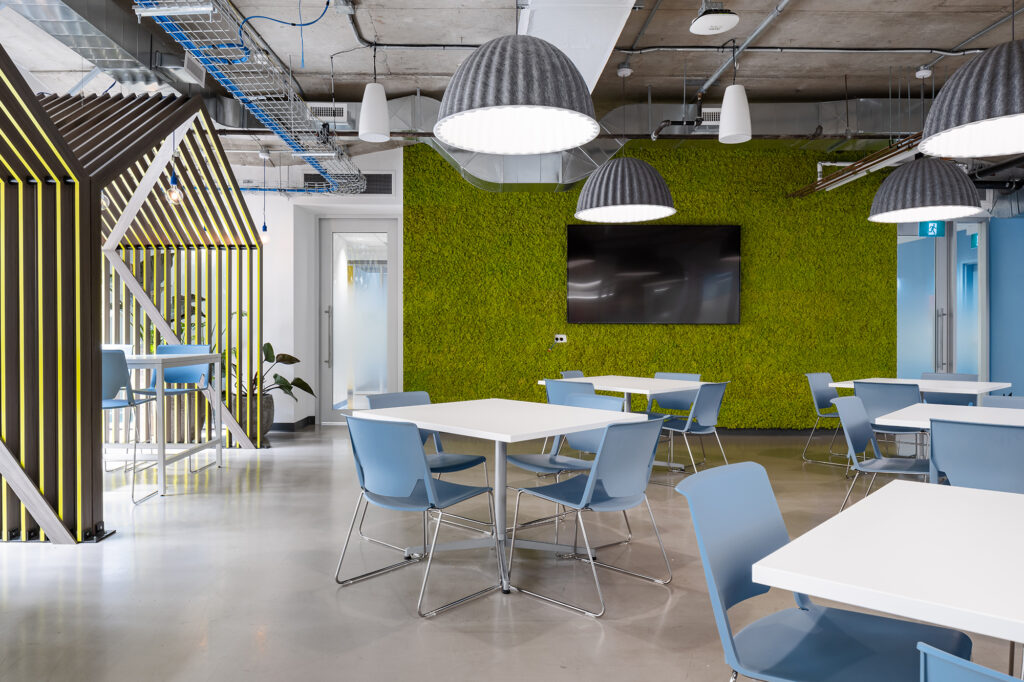
Bringing Nature In
Biophilic design takes center stage in this transformed space. The entire floor is adorned with live and preserved plants, and a captivating moss wall that graces the café area. Together with elegantly designed slatted pergolas, these elements create a harmonious blend of indoor and outdoor atmospheres. Colour plays a significant role as well. It cleverly guides visitors through the space, ensuring they effortlessly find their way to labs, meeting rooms, or cozy collaborative areas.
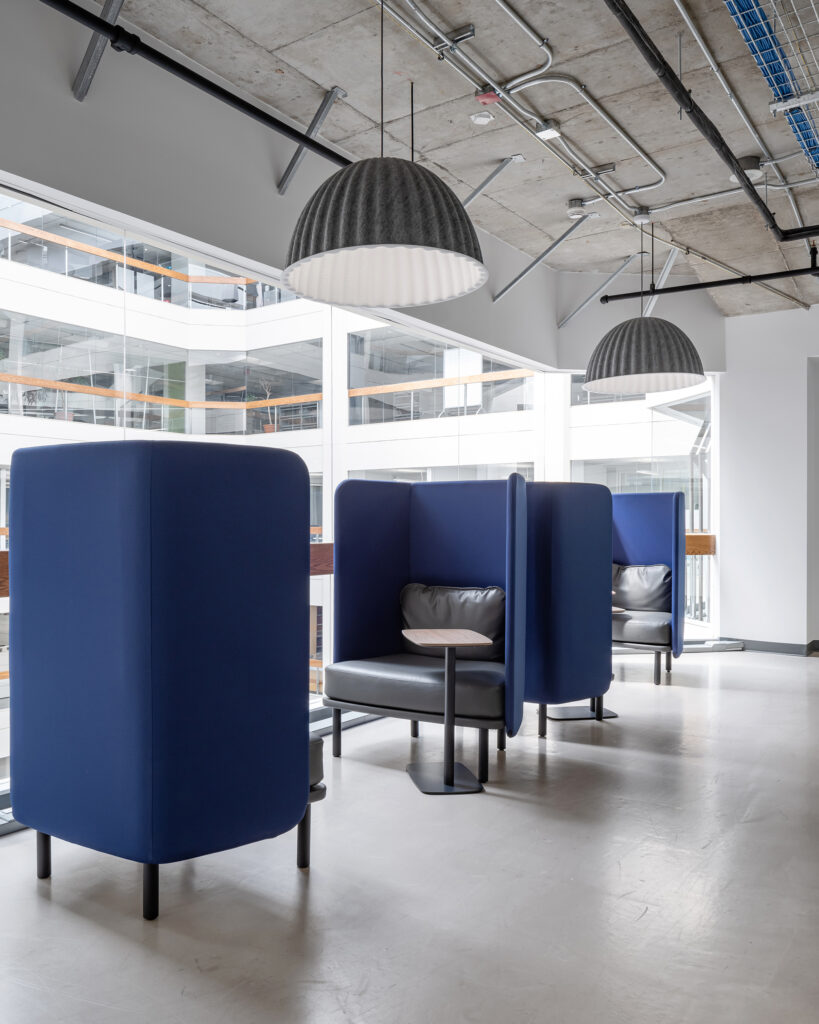
A Space for All
The program for this space is thoughtfully designed to cater to the diverse needs of its occupants. It includes shared graduate and post-graduate workspaces, meeting rooms, inviting open student collaboration zones, labs, a shared café, faculty offices, and an IT workshop for both students and faculty. Despite being a single project, each half of the floor was meticulously planned to reflect the distinct needs and identities of the two departments.
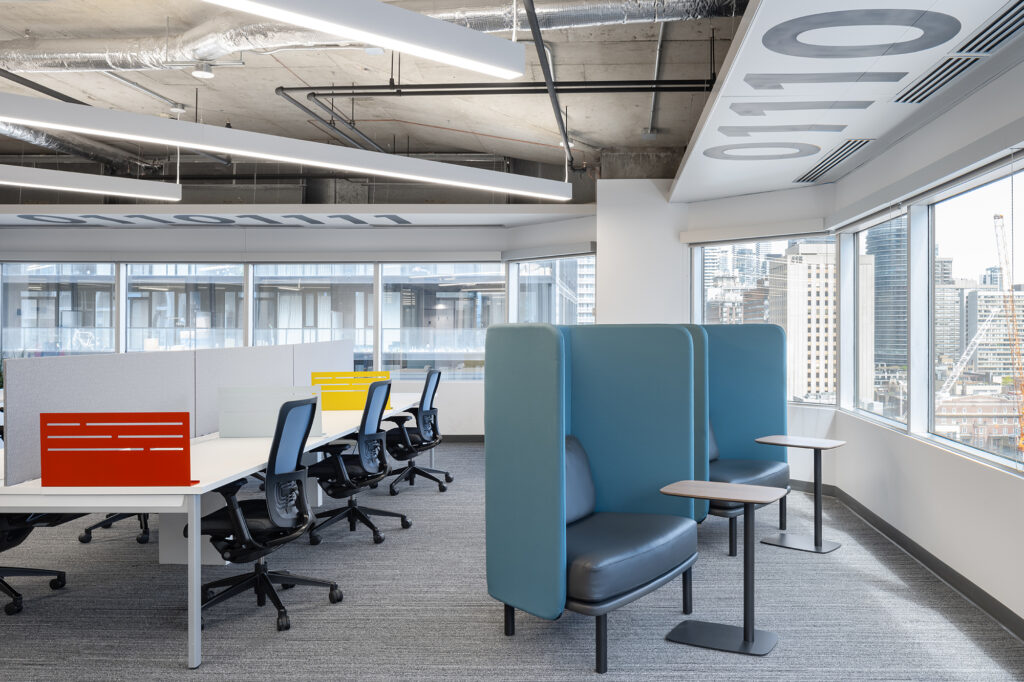
Unique Identities
The Science section embraces an industrial ambiance, leaving parts of the ceiling infrastructure exposed to highlight the applied technology. A bold statement in binary language spelling out “innovate” graces the perimeter of the open work area. In contrast, the Psychology section focuses on clean lines, warm wood accents, and pops of color that individualize separate lab spaces. A serene biophilic mural in the public waiting area brings nature’s tranquility into this part of the floor.
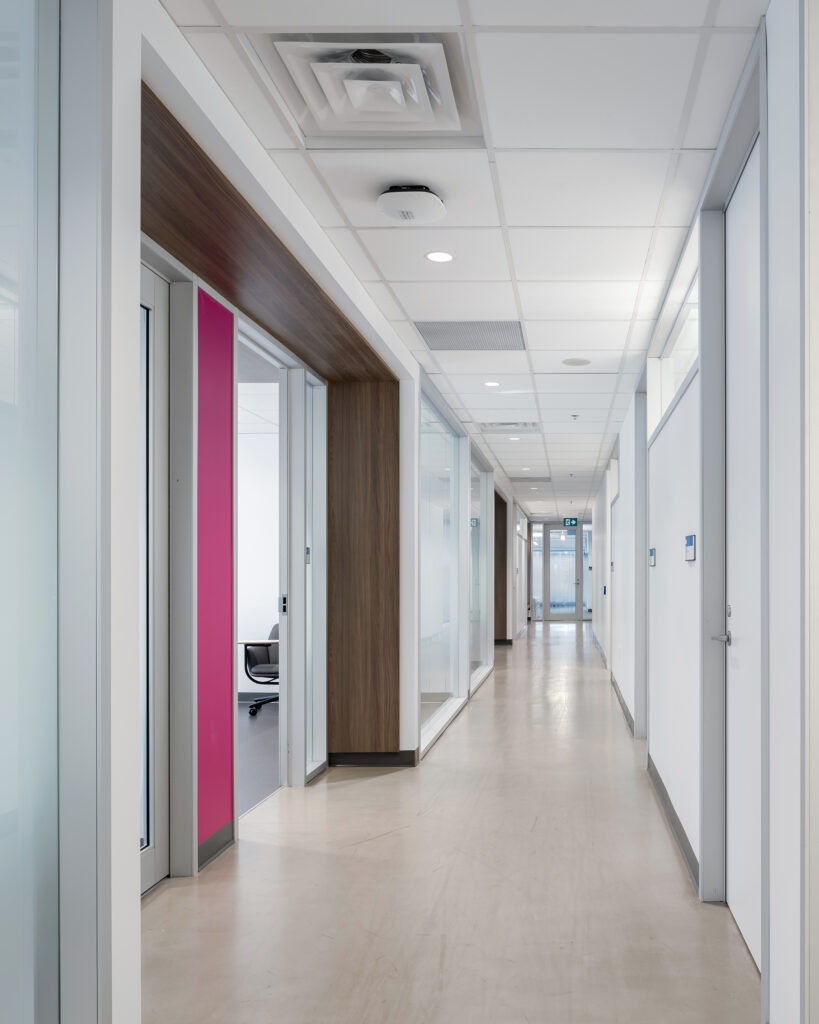
Comfort in Details
The design doesn’t just stop at aesthetics but also delves into comfort and functionality. Long corridors are thoughtfully adorned with wood slats and wool felt, creating acoustically comfortable bench alcoves at key intersections, making it a space that’s as pleasant to navigate as it is to work in.
In this transformation, Toronto Metropolitan University has not only created an aesthetically pleasing and functional space but also a testament to the power of biophilic design in enhancing well-being and productivity in our modern work environments. It’s a reminder that in our digital age, reconnecting with nature, even within the walls of a university, can elevate our experiences and elevate our understanding of sustainable and harmonious architecture.